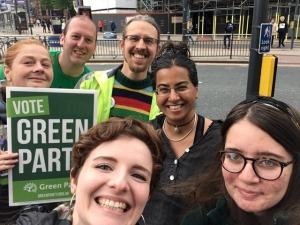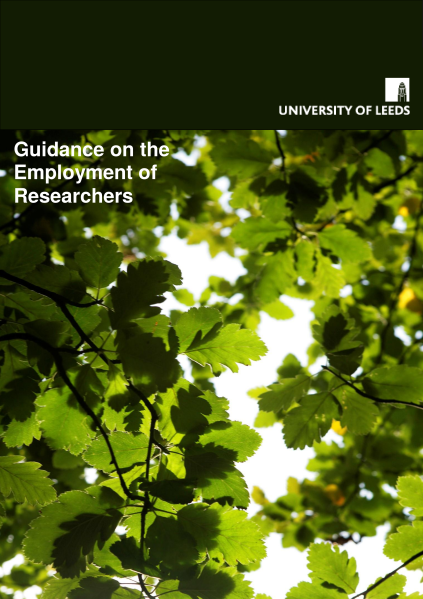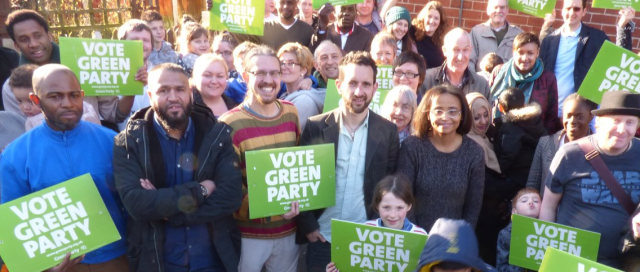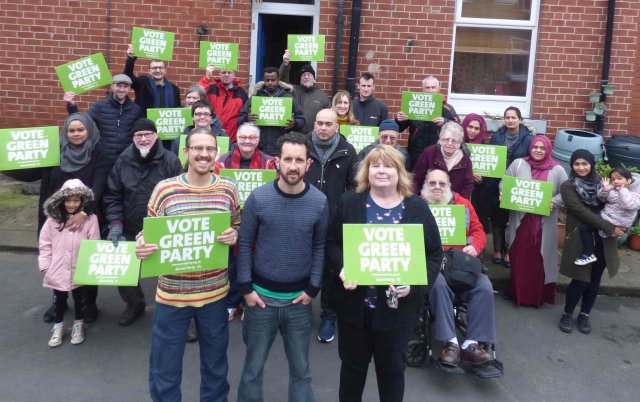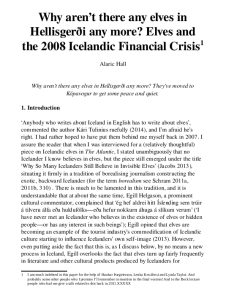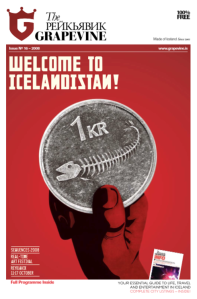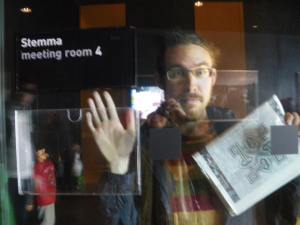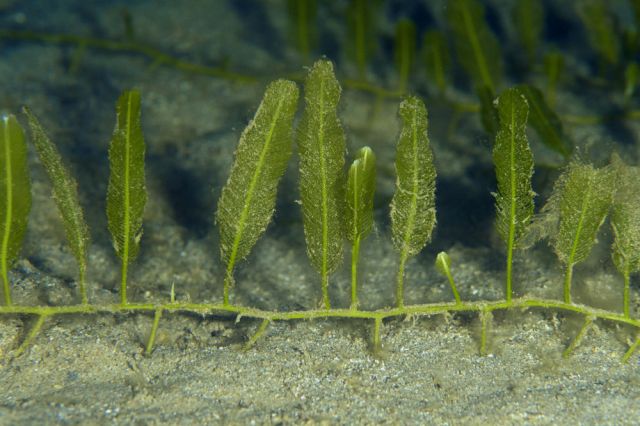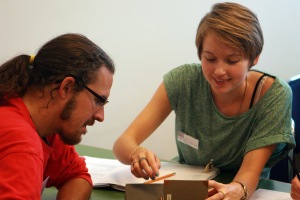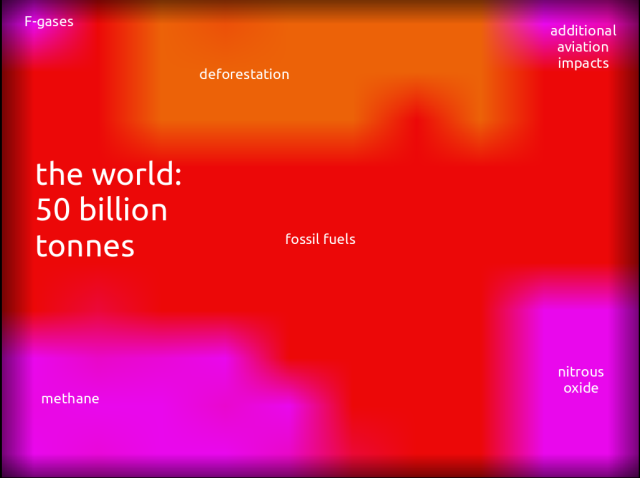inContents:
Introduction
This blogpost mostly arises from fragmentary conversations with members of my family over the last few months: they know who I want to vote for but not necessarily why; on the rather infrequent occasions I get to catch up with them, we don’t necessarily want to spend our time chewing over Westminster politics. So I’ve written this. It’s kind of a Green Party FAQ focusing on the things my family (who vote in England and Wales) tend to ask me. But of course anyone’s welcome to read it!
If this stuff doesn’t convince you, that’s totally fine; at worst you’ll have a better sense of where I’m coming from 🙂
I know you’re really busy! And I know this is looooooooong: so I don’t expect you to read it all: just to cherry-pick the FAQs that interest you. Maybe if they tempt you, you’ll want to read more in the 2015 manifesto. If not, fair enough.
Discussions with my family tend to focus on the economy (as they would with most voters), so that’s what I’ve focused on here: why would a mainstream Con/Lib/Lab voter switch to Green? Everyone knows that if environmental concerns are at the top of your list, you’ll vote Green. Almost everyone I know in school-teaching (I know a lot of school teachers!) reckons Green education policy leaves the Tory/Labour mainstream standing in the dust (basically because the Greens follow scientific advice and are serious about cutting back on government micromanagement). Friends with expertise on gender or racial equality, or fair treatment of immigrants (not forgetting that most of my close family have lived/worked abroad), see the Greens as well ahead of the Big Three. So the economy is the obvious area where sensible people might wonder how viable the Greens are.
I’m writing this on a long journey, which means that I don’t have the books and internet connections I might like to check my claims and facts; the Green Party’s 2015 manifesto came out during the journey and I’ve only had a chance to glance at it so far. And I’m not an economist or a political scientist. But I am a voter, and I’ve been reading and thinking about this stuff quite hard. And I’d be really grateful if people make corrections/ask for clarifications in the comments!
Why bother voting for a small party with no chance of gaining a seat in my constituency?
You might well ask! This is a widely voiced objection to voting for small parties in the UK’s first-past-the-post system.
Actually, in most constituencies, the sitting MP has a strong enough lead that their victory is certain. So really, the question is usually not so much whether it’s worth voting for a small party, but whether it’s worth voting at all. (Over a third of Britons figure it isn’t.) The best you can usually hope for is that your vote will become part of a long-term trend, or convince a jittery party that they should adapt their policies to win your support next time.
A Green vote can do that: by voting Green we can send a much needed message to the big parties that we support greater equality and sustainability in Britain.
But this election is the most exciting in my lifetime for a different reason: despite the Westminster voting system, the UK electorate has at last started behaving like other European electorates, granting substantial support to five or six parties. Because of the archaic first-past-the-post system, support for these parties mostly won’t translate into MPs in Westminster, and in two months the House of Commons will look much like it does today (just with Scotland’s Labour MPs partly replaced with SNP MPs). But the legitimacy and practicality of the system that elected the Commons will be seriously in question for the first time. By voting for the parties/candidates we genuinely most support, we can help show what a representative government should look like, and so apply pressure for an electoral system that delivers representative government in future.
What are the key points I’d be making if I voted Green?
I don’t think we want to get too distracted by the flickering, who-slept-with-whom, whose-speech-tomorrow-will-say-what, what-the-Yen-did-yesterday-against-the-dollar coverage that dominates media representation of politics.
What are the key social questions of the early twenty-first century, which really underlie the political debates on the front pages? Here’s my suggestion:
- The environment. Humans are living around the limit of what the planet’s finite resources can provide (and beyond the limit of what they can provide sustainably). We can accommodate our growing species partly by consuming more efficiently, but we also have to consume less.
- Inequality. The mid-twentieth century saw humans, in almost all countries, growing both better off and more equal than ever before. However, in recent decades inequality has been growing steadily—in the UK since about 1979, the year I was born. The rich (particularly the wealthiest 1%) are getting much richer and the poor—and recently in the West everyone else—are getting poorer. On current trends, few parents can assume that their children will be better off than they are. NB: if the government actually collected all the tax it should be getting, it would be spending well within its means; and the vast majority of tax avoidance/evasion is by very rich people and corporations. A more equal society would also be more able to afford to care for its people.
The Green Party is properly committed to tackling these issues, whereas we can see from its actions that the post-Thatcher New Labour/Condem concensus is not. Every year since 1979, the richest have got richer; mostly the poorest have got poorer; and non-rich Britons in general are presently markedly worse off than they were in 2007. Out of my siblings, cousins, and non-retired uncles/aunts, almost all are worse off than if they’d been doing the same job in 2007—and I’d naturally encourage any pensioners to consider the world from our point of view!
If you don’t already agree that (1) is really important, me spelling out the evidence is probably not going to help, so let’s assume you do… But British people are often a bit uncomfortable with (2) (perhaps because it sounds a bit French-revolutionary?) so that’s the next FAQ 🙂
The two themes go together of course: one way to achieve sustainability for the species is for some rich people to continue or increase their consumption and to plunge the majority of people into growing poverty and wretchedness (NB this is partly happening at the moment: the world’s poorest have been getting poorer for several decades). The other way is improve the lot of the majority of people by evening out wealth, hopefully making sure that the happy mean that emerges leaves everyone comfortably off. It seems a no-brainer which option we should seek. And there’s no better place to start than at home.
If you have a different top issue for the early twenty-first century, I’d love to hear it and muse on the Green Party’s stance on it.
Why are you so wound up about equality? What about meritocracy for example?
Let’s just get a few facts on the table: the richest 1% of UK people own more than half the UK’s personal tradeable wealth. Counting earned and unearned income, the top 1% take in £110bn per year: the government deficit is £75bn. If you’re in the second-richest percentile in the UK, you’ll own property worth a bit under £1m; if you’re in the richest percentile, you’ll own property worth around £15m. And this situation is getting more extreme, not less. (I get these figures from the work of Danny Dorling, who’s an Oxford human-geography prof., not from some random internet source!)

Liquid wealth in the UK: inequalities in worth of disposable assets. From Danny Dorling, Inequality and the 1% (Verso 2014), p. 22.
Once you’ve met people’s basic needs, there’s a good case that more equal societies are happier ones. Even if you’re at the top, you don’t really want to be in a society which consigns its poorest to rubbish education and poverty—not least because most serious crime is committed by people with very little to lose. A more equal Britain is also consistent with a more solvent government. I do recognise that absolute equality is not possible (because humans are all different) and probably not desirable. But the UK has a long way to go before it’s in the ‘too equal for its own good’ zone! The UK’s top 20% of earners make about 7 times as much as the bottom 20%; Scandinavia’s more like 4 times and is on almost all measures a more pleasant place to be. And their governments are less prone to economic and debt crises. We can be like that if we vote for it.
People often say to me that inequality of income/wealth is okay as long as there is equality of opportunity—rewarding success generously is fine as long as the success is earned. Fair enough, in theory. But in real life, equality of opportunity correlates closely with equality of outcome: it appears that you can’t get one without getting the other. This is probably partly because the more unequal a society is, the bigger the incentive for the rich to hold on to their place at the top, by hook or by crook. So it’s no accident that Britain has almost the highest inequality and the lowest social mobility in the developed world: if you’re born poor, you stay poor. If you’re born rich, you stay rich. Britain is not, presently, a land of opportunities.
People also often say that it’s fine for the rich to get richer as long as everyone is getting better off in finite terms. So it’s worth noting that, at the moment, they aren’t—either globally or in the UK: the poor, and recently the middle classes, are getting poorer. (Besides that, there’s a fair amount of evidence that once your basic needs are met, actual human happiness is more about relative wealth than absolute wealth, and the more equal a society, the happier its members: the poorer are less envious of the rich and the richer are less fearful of the poor.)
One reason why greater equality is good is that if you raise the wages of the poor, you substantially increase the tax base (and therefore funding for social goods like universal healthcare, education, and infrastructure). As poor people’s income improves, they pay more not only in income tax but also in indirect taxes (e.g. sales taxes); and they generate business for producers of goods and services, who also pay tax. Moreover, if you’re poor, a little more income makes a big difference, giving you much better chances for staying healthy, staying in education, staying married, and staying out of debt or crime. So raising the incomes of the poor saves the exchequer money in the short term and improves the UK’s human capital in the long term.
By contrast, if you raise the wages of the rich (particularly the super-rich, within the top 1%), they don’t spend more in the real economy: there are only so many meals you can eat in a day, no matter how posh the restaurant; only so many Porsches you can be bothered to fit on your lawn. So when we increase the incomes of the rich, they use the extra dough to speculate on property or other assets, fuelling bubbles and making things more expensive for everyone else. Meanwhile, the rich are generally good at finding ways to keep their money from the tax-man. Rich people have spent a lot of money and effort in recent decades to convince governments and voters that if the rich get richer, everyone gets richer (the so-called ‘trickle-down effect’). This just isn’t supported by sensible data; it’s a way to convince people to vote against their own self-interest.
Indeed, for capitalism to work, you need markets: people who can afford to buy the goods and services capitalists bankroll. Otherwise you get a Great Depression-style spiral of falling demand leading to falling production leading to even fewer people with jobs leading to even less demand leading to even less production, etc. That’s fine if you want to end up in a non-capitalist feudal society. If not, you probably want to be like post-War governments, which, scarred by the experience of the Depression, were keen to redistribute wealth. Thus, for example, the post-War US government poured money into reconstructing Europe and Japan—so that people would be able to afford American products.
The Green Party’s policies look left-wing, or just freaky. Can I really vote for these weirdos?
Even I look at a list of Green Party policies and, while liking them individually, am, like, blimey, this looks weird. (A line of thought epitomised by the memorable Telegraph headline ‘Drugs, brothels, al-Qaeda and the Beyonce tax: the Green Party plan for Britain’.) That certainly puts off voters, but does it make them bad policies?
Most Green Party policies only look weird relative to the UK’s very narrow post-Thatcher mainstream. By this measure, even 1960s Harold-Macmillan-era Tory policy looks like radical leftism (support for nationalised utilities, full employment, negotiation with unions). I’m reminded of Noam Chomsky’s aphorism that ‘the smart way to keep people passive and obedient is to strictly limit the spectrum of acceptable opinion, but allow very lively debate within that spectrum’. I think that describes UK political culture nicely, and partly explains why Green policies often sound so unimaginable.
When we look at Green Party policies, I suggest we should ask not ‘Can I imagine Westminster doing this?’ but ‘Which sociey would I rather find myself born into: Germany or the USA?’ The Green Party’s policies/intended outcomes look much more German than American; the Condems are presently making us more like the USA. Answers will vary according to the precise issue, but I’d mostly much prefer to live in Germany. Germany has a strong economy based on skilled manufacturing by smallish (not too big to fail) companies (including the world-leaders in sustainable energy, which sounds like a good investment). It has lowish crime; good healthcare and decent social security; virtually free higher education; relatively cheap housing; consensus-led government that gets things done at a national level and increasingly abroad; plenty of power devolved to government at a regional level; a national recognition that its history of invading other countries has not been good for human wellbeing; and foreign policy focused on patience and diplomacy that improves the world slowly rather than on imperialist adventurism that messes up the world quickly. Germany has football teams owned by their fans, not by speculating oligarchs and sheikhs. Germany is still no utopia. But is it so weird to have policies like Europe’s economic and political powerhouse—rather than like the most unequal and violent society in the rich world, with the highest rate of incarceration of almost any country?
Another version of this is to look at Britain in the 1950s-60s. Although I could list huge numbers of horrific events around the world during these decades, most people in the vast majority of countries grew better off in absolute terms, and at the same time those societies grew more equal—whether in the UK, Russia, Nigeria, the US, Argentina, or China. The richest were on the back foot, having lost huge amounts of wealth through the Wall Street Crash, and through both the physical destruction and the monetary inflation of the War. Meanwhile, voters (in the West) and their subjects (in the colonies) had all suffered enormously through the World Wars and knew that the elites on whose behalf they’d fought owed them big time. Western elites, seared by the experience of the Crash, knew better than to let private finance create bubbles and leave the taxpayer to pick up the tab. The economic boom of wartime America taught them that state spending was effective in stimulating economies and keeping the treasury healthy; governments introduced serious wealth taxes and discouraged companies from diverting daft amounts of money into executives’ salaries with high taxes on excessive salaries; they recognised that state education and healthcare for all was an efficient way to maximise the wellbeing and productivity of their people.
It was this ‘great levelling’ of the 1950s-60s that helped to give my parents their upward social mobility and secured my own wellbeing. As elites found their feet again around the 1970s, this progress started to be reversed. I have watched the opportunities for my family and my students narrowing: paying ever more for their education, they have increasingly been expected to scrap over pay-to-work internships. Rather than reducing everyone’s workload a bit, technological progress has been accommodated by reducing a significant minority to permanent unemployment or semi-employment.
I’m not saying we can just go back to the 1950s (nor would we want to start over fighting the battles against racism, sexism, and social conservatism that people began to win then). Nor can we just replicate old industrial policies. What I am saying is that the innovative and interesting policies that the Green Party is suggesting to promote equality are trying to achieve a kind of society that we’ve had within living memory and which we benefited from hugely at the time.
National debt
Everyone agrees that under the Condem government, the economy has been rubbish. But they fear that it would have been even more rubbish under any other government! The most looming issue in the minds of most of my family is the national debt: like a lot of people, they reckon the last Labour government should have been saving rather than spending during the boom.
Lots of my left-leaning friends argue this is a red herring. But let’s assume that it would be good to reduce the national debt, if only to avoid giving creditors too much say in how the country is run (since their interest is not in the citizens’ wellbeing but in their own short-term profits). As far as I know, all parties are promising to stop spending beyond the Exchequer’s means by 2020, and the Green Party is no different.
So the question is why trust the Greens’ plans to remove the deficit over the Big Three’s?
Let’s be clear that in the 2010 election campaign, all the main parties made ridicuously optimistic assumptions about economic growth: the Green Party’s more cautious estimate was also over-optimistic, but more accurate, than its competitors’. (Maybe because the people behind it were scholars rather than spin-doctors.) The Green Party is also making more cautious predictions this year, and I’d put money on them being right. So I think their planning is unusually trustworthy. (The last few pages of their manifesto also provide quite detailed costings, unlike the other parties’.)
And let’s be absolutely clear that despite its 2010 promises, the current government has not reduced national debt one penny: it is still increasing the national debt every day. David Cameron announced in 2013 that the country was ‘paying down its debts’ and was reprimanded by the Office for National Statistics because this was a bare-faced lie (all his government had achieved was to reduce the amount of the government’s overspend.)
What went wrong? The Chancellor has, year-in-year-out, cut government spending, while predicting that this would not reduce the tax-take. Meanwhile, he reduced taxes for the richest, and (following the policy of the last government) raised the value of their assets through quantitative easing. But these policies have hammered the economy: government cuts have led to poorer citizens, and so less spending, and so a reduced market for private-sector goods and services, and so a recession, and so a plummeting tax-take. (Employment is picking up, but a lot of it is part-time or insecure, making the UK economy structurally more fragile.) The exchequer has seen little return on its gifts to the rich—only a new property bubble as the wealthy try to find something to spend their gains on.
And it’s not just teachers, nurses, and undergraduates who are feeling the pain: even a sandal-wearing peacenik like me worries about what the armed forces and police will look like by 2020. (The Greens would cut Trident, but not conventional defence spending.)
Even the Economist, which is generally very keen on reducing the government’s share of GDP, reckons Osborne’s policies have needlessly prolongued the UK’s recession. When the Economist agrees with my lefty friends that the government should be spending more, you know something’s really wrong in the Condem camp.
So I at least trust the Greens’ economic predictions more than their competitors’.
Rather than trying to cut government spending even more, the Greens are serious about collecting the tax we’re owed: tax avoidance and evasion (the vast majority by rich people and corporations) loses us £120bn per year, way more than the Government’s annual overspend (around £75bn this year). Rather than cutting HMRC and Companies House staff, then, the Greens would invest in more (and better) tax-collection, and they have innovative ideas for changing tax to be less avoidable/evadable (e.g. taxing land, which is hard to hide; obliging banks to provide relevant information about companies to HMRC; simplifying the tax regime). They’d also tax more, though the focus there would be to enable a bit more spending, which would partly stimulate growth: see next FAQ.
Overall, I think the Greens are both more up-front and realistic about how to end the government’s deficit, and they deserve credit for this.
The Greens and taxation—such as the land-value tax
I think a really important point here is that the Greens have lots of genuinely innovative, interesting ideas for changing how taxation works in Britain, picked up from serious academic research. I’m not a taxation or economics expert, but I think it would be really valuable having more votes for the Green Party and/or a few more Green MPs just because it would put a lot of fresh, interesting ideas more firmly on the national agenda. The more saleable ones would be scrutinised and maybe picked up by the main parties; ideas that didn’t look workable to the experts would be dropped. So you can vote Green in the knowledge that it would stir things up in Westminster without committing yourself to a radical rethinking of UK taxation.
But let’s imagine the Greens formed a government. They would tax more overall (an extra £150bn by 2020). But I don’t see this as empty ‘tax-and-spend’ politics. The party has lots of sensible, but also innovative, rethinking of taxation to (probably in their perceived order of importance):
- Shift the accumulated wealth of the richest to ensure a fairer, more productive society.
- Incentivise environmental sustainability.
- Close the deficit.
- Enable more spending on socially desirable things.
I think a lot of the proposals are intelligently designed to produce sensible economic incentives: they’d reduce taxes on employing people (primarily employers’ National Insurance contributions) in favour of taxing wealth; they’d reduce VAT (which the poor pay proportionately more of than the rich) in favour of taxing environmentally damaging activities. They’d tax income a bit more, but mostly for really high earners; they’d focus on taxing wealth instead, discouraging people from resting on unearned laurels and encouraging them to work in the real economy.
The traditional Tory response to higher taxes on anyone but the poor is to say ‘arrrgh, but then all the rich people will run away and we’ll have no-one to run our companies, and no rich people to tax!’ But the people who say that are also the people who say that giving the rich more money benefits us all, and we have thirty years of evidence against this. There was no exodus of the wealthy in the 1950s—and even if there was now, a society which invests more evenly in its people enjoys stronger human capital overall than a society that focuses its investment on a small elite, as the Scandinavian countries keep showing.
I won’t go through the Greens’ taxation policies here (this blogpost glosses them a bit). But here’s one example of a policy which I think is interesting and worthwhile. You don’t have to know that it’s right for Britain to want to see it discussed at a higher political level than this blog!
UK council tax is a farce: even in the early ’90s, when it was introduced, it was a desperate patch after the collapse of Thatcher’s Poll Tax idea, and it’s based on property values from 25 years ago. I, for example, pay way less council tax than my property ought to, just because I live in an area that was very cheap in 1991. So the Green Party would switch council tax to a land-value tax, set by local councils. Even in our digital-age economy, most wealth ultimately rests on ownership of land: without land, you can’t have factories or docks or theatres or internet servers. Making money renting out or speculating on land isn’t an inherently productive activity: it just piggy-backs on other people’s productive activities. So taxing land discourages people from just sitting on property portfolios and being rentiers and encourages them to do something useful instead: it targets wealth rather than work, and discourages property speculation. Meanwhile, you can’t hide land in a tax-haven.

Property wealth in the UK: net positive equity by wealth percentile (from Danny Dorling, Inequality and the 1% (Verso 2014), p. 95.
Just another example of a policy worth hearing more about: putting the money supply under democratic control
So this is just another example of worthwhile, innovative thinking which the Green Party can help put on the agenda. This is quite spacy and I’ve spent a while trying to learn about it (but might be wrong on some of the below). Of all the FAQs here, this is the most mind-bending so you might especially want to skip it!
Money is a commodity: people want it as a useful medium of exchange. When it is scarce, its value rises (deflation); when it is abundant, its value falls (inflation). But unlike mutton or cars, money is entirely a social creation: it has no inherent value, and the only point of society believing that a ten-pound note is worth a joint of mutton or a few litres of petrol is that this fiction benefits society. But as with a lot of social goods, the production of money can be captured by a limited section of society, which then uses it for its own benefit at the expense of others’.
The government has made itself the only body allowed to issue cash. Since a pound coin costs a lot less than a pound to make, the exchequer gains almost a pound for every pound coin it issues: the monopoly on creating cash is a useful revenue stream for government. Private banks are not allowed to create cash, but they are allowed to create electronic money—basically, as much as they want, as long as they can stay solvent (or rely on the government to bail them out). Banks also make a profit on creating money. Let’s say I get a £100,000 mortgage from a bank. The bank creates £100,000 of electronic money out of thin air (I swear! I read up on this! and this is legal and normal!) and give it to the house-seller, who suddenly has £100,000 in her current account that she can spend on real goods and services. Meanwhile, the bank declares that I owe them £100,000 plus interest—perhaps another £50,000 by the time I pay off the mortgage. A handsome profit! Moreover, the bank considers my debt to them an asset, which they can borrow against (seriously). 97% of money in the UK is created by banks in this way. Banks like profits, so they create as much money as they can get away with, which again tends to encourage bubbles (property bubbles again), and leaves the government/Bank of England with little control over how the economy grows. Meanwhile, the government doesn’t make a profit on this electronic money (at least not directly), but someone, somewhere, is paying interest on 97% of the UK’s money, which goes into bankers’ (shareholders’) pockets.
If the government made itself the only creator of electronic money as well as cash, it could regulate growth better, and benefit from a lot more income. Basically, just as they presently have to get cash from the Bank of England before they can put it in a cash machine, banks would have to get electronic money from the Bank of England before they could lend it to you to buy a house.
A real-life example of how this kind of rethinking could have worked in the last five years is ‘quantitative easing’. This is the weird name for a process whereby the government tried to spend its way out of the 2008 financial crisis. Over three years, the Labour and then the Condem governments basically created £375bn of electronic money (bing! Just like that!). But just sitting on a pile of electronic money doesn’t get you out of a recession: you have to put the money into the economy somehow. So they used it to buy (to cut a longer story short) intangible assets like shares. The act of buying these assets amounted an increase in the demand for these kinds of assets, so by buying them the Bank raised the value of all assets: share prices rose by 20%, so anyone who owned shares was now wealthier. Obviously the people and institutions that own shares are pretty wealthy to start with, and the richer they are the more they own, so this directly benefited the rich. The idea was that they would then spend this money in the real economy, lending it to small businesses or paying the local builder to make extra duck-houses on their estates. But they didn’t. They hoarded and speculated (partly on property: the property bubble again…).
There’s no reason why the government couldn’t have decided to put this £375bn into the economy by spending it in ways that benefited ordinary people: for example, by paying small businesses to install insulation in more of the UK’s housing stock. (I know because Caroline Lucas checked with Mark Carney, the governor of the Bank of England.) Suddenly builders would have more money in their pockets, some of which would return to the exchequer as income tax; they would spend the rest on real things, like a new bike for the kids—which would put VAT into the economy. Meanwhile, the guy in the bike shop would also now be paying more income tax, and spending more money on, say, going to the cinema (more VAT), etc. And the government would have more money to spend on nurses or teachers or diplomats, and the people in the insulated houses would give less money to big energy companies funelling their profits to shareholders and would again spend their saved money in the real economy (new bikes for the kids again). People who know more about this than me (but who no doubt some other people disagree with) reckon that for every £1 created by the government, you’d get more than £2 of GDP growth.
I’m not qualified to say whether this is right. If it all sounds too freaky to you, maybe just go and vote for one of the Big Three. But to me it sounds a lot better than lining the pockets of the rich to little public benefit. Either way, would I have liked to have more voices in Parliament demanding that our representatives debate the merits of this alternative approach? You bet.
The other Green policy I think is really important: constitutional reform
The Green Party would institute a democratic constitutional convention to rethink how Britain’s governed. Fiddling around with constitutions can sound like an abstruse endeavour when people can’t afford homes, national debt is rising daily, and there’s civil war in Iraq, Syria, and Libya. But there’s a good argument that Parliament won’t become responsive to its voters’ desires and needs without change.
If you were planning how to run a country, would it look anything like this?
- The number of a party’s MPs is only tangentially related to the number of votes cast for that party; it is possible for one party to get more votes than another but to get fewer seats in Parliament.
- Before laws are passed, they are vetted by (a) the Church of England’s bishops (who until last year were all men); (b) some random aristocrats; (c) and a bunch of other people chosen by an obscure process of horse-trading by MPs, partly on the basis of who has given them the most money.
- MPs (about 650 of them) vote by physically walking through a door. This takes at least fifteen minutes per vote (plus time spent getting from elsewhere in the large, crumbling building to the relevant door; anyone want to do a back-of-envelope guess of how much that costs the taxpayer?).
- Economically, the most important borough in the country is the City of London, whose democratic representatives are chosen by the CEOs of companies with offices in the borough. Unlike anyone else, the City has a constitutionally appointed, permanent lobbyist in the Houses of Parliament (called the Remembrancer), whose constitutional role is to promote the City’s (CEOs’) interests.
- If you’re from almost any ex-British colony and live in Britain, you can vote in the General Election. But not if you’re from anywhere else.
- The constitution is a patchwork of common law dating back at least a thousand years; no-one has ever bothered to write up a single document that ordinary citizens can read explaining what their rights are.
- And let’s not start on the relationship with the devolved national parliaments!
You might think that one or two of these are actually good ideas, or at worst lovable quirks. But all of them?! These systems make the workings of government obscure to voters, and insulate government from the real experiences and needs of citizens.
Caroline Lucas’s recent book Honourable Friends? has a vivid sketch of Westminster by someone who’d had a career outside politics, and then worked in the EU parliament, before entering Westminster: she’s polite, restrained, but scathing about the ‘Westminster bubble’. I’ve never had anything to do with Westminster directly, but Lucas’s sketch rings true because it sounds so much like my old college at Cambridge (no surprise, given that a quarter of MPs studied at Oxbridge). Magdalene was basically run by old men who thought it was a boarding school; they couldn’t see where charming traditionality ended and damaging inefficiency and archaism began; and they thought that taxpayers should fund their exceptionally inefficient practices Because They Always Had (or at least since the taxpayer started paying for higher education, in the 1920s). Likewise, by Lucas’s account, and whatever their best intentions, MPs are muffled in a bubble of privilege and tradition that tends to go to people’s heads.
The Tories will do as little rethinking as they can get away with; Labour only marginally more; the Libdems more again; but the Green Party are really serious about a comprehensive, democratic process of constitutional reform.
Who’s this Ed Carlisle guy you’re always going on about?
This one is really just in case anyone from Leeds reads this blog, as it’s not really about Westminster politics at all (and since the UK has the most power-hungry central government in Europe, local councils have hardly any real power, so there’s little point choosing council candidates on the basis of parties’ Westminster policies). In fact, although my friend Ed Carlisle is standing for the Green Party, he’d have stood as an independent if it weren’t even harder to get elected as an independent than as a Green—or if he wasn’t convinced by the party’s policies.
Still, Ed’s part of my Green Party story, because I’m helping him with his campaign and because I think he says something about what the party’s candidates are like, so he belongs in this blogpost. Here in my South Leeds ward, all our councillors are Labour, and it’s been a safe ward for them for time immemorial: our councillors are effectively chosen by the local party committee, not by the voters. None of the councillors live in the ward, preferring leafy North Leeds, and they basically just turn up for statutory meetings with the few people who know about these things—and at election time. You couldn’t say they’ve been proactive for us; indeed, on the few issues regarding my street where I’ve seen the Council in action, they’ve been pretty half-baked.
But now I have a convincing alternative. I met this guy Ed a couple of years ago, before he was planning to stand, just because he heard that people in my building were planting stuff to improve the look of the street and he chose to walk down and help us out. Then he got me involved in governing his local primary school, where he heads up the board of governors. He lives in the ward in a back-to-back; so he knows where the potholes are, whether the bins get collected, what a heating bill here looks like, and where you might want traffic-calming measures. Moreover, he’s always busy helping out with/running this or that community event: the sort of councillor you’d meet and air your views with just because you turned up to the local school fete, not because you’d (a) found out about and (b) found time to go to a residents’ meeting or clinic.
And more inspiringly, he has cool ideas, achievable even by the kind of emasculated body that a UK council is, and the like of which I’ve never seen from my incumbent councillors. Although a glance at his manifesto will be too local to be of much interest to may readers, it shows the to-do list you can develop when someone really knows their area, and makes a proper effort to ask around about what’s bothering people. But it also includes cool ideas of more general interest, like establishing coalitions of residents for collective bargaining for cheaper energy and telecoms bills; a not-for-profit scheme to employ and train people to install insulation in our awful housing stock; promoting public art (every damn city I go to seems to have more and better murals than Leeds); an annual ‘meet your neighbour’ day. A lot of this has just been about knowing/finding out all the really interesting grassroots ideas for improving the area and proactively getting the Council to support them, rather than holding them back.
As I say, few readers of this post will have a chance to vote for Ed, and a lot of Green candidates, for local and Westminster government, are ‘paper candidates’—people who can’t campaign actively but have stepped forward to give you a chance to express your preference for the Green Party anyway. But people like Ed give us a sense, I think, of what a Greener politics might look like.
 It’s not often I recommend buying anything, to anyone, and it’s even rarer that I recommend a kitchen gadget. As a rule, gadgets have a big-ish environmental footprint and they clutter up the house.
It’s not often I recommend buying anything, to anyone, and it’s even rarer that I recommend a kitchen gadget. As a rule, gadgets have a big-ish environmental footprint and they clutter up the house.
